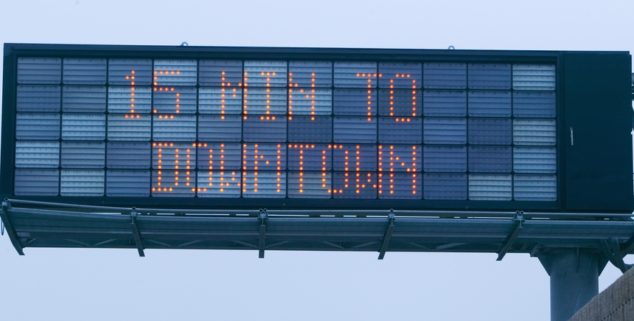Opinion
A power grab by Caltrans?
 A California freeway sign provides information for motorists. (Photo: Joseph Sohm)
A California freeway sign provides information for motorists. (Photo: Joseph Sohm)Flashing Amber Alerts, public safety messages and directional traffic alerts – for decades, Californians have agreed this type of information is what belongs on the changeable outdoor message signs along our highways’ public spaces. Common sense and public policy says it is in the best interest of the public to keep this public right-of-way space limited to such content and free of blight.
But a bill before the Legislature, AB 1405 (Mullin), is set to bulldoze over this thoughtful approach. Not only does AB 1405 open up our highways to full commercialization and blight, it also rips away local control, eliminates public input regarding outdoor signage and shifts critical local revenue to Sacramento.
AB 1405, would eviscerate successful public-private partnerships that many local governments across California enter into with outdoor signage companies.
AB 1405, would eviscerate successful public-private partnerships that many local governments across California enter into with outdoor signage companies,
Veiled as a “digital sign demonstration program,” AB 1405 gives Caltrans carte blanche to install and operate new digital signs within the right-of-way of our highway system, hitting these spaces with visual blight whether a city that neighbors the highway wants it or not. The bill opens up a power-grab for Caltrans to assume complete control over contracting with massive corporate advertisers on 1,200 new digital signs.
While bill author Assemblymember Kevin Mullin of San Mateo claims this would generate millions in revenue annually for the state, he fails to disclose the significant hit and impact to local cities, counties and our residents.
AB 1405, would eviscerate successful public-private partnerships that many local governments across California enter into with outdoor signage companies, ensuring any economic benefits are shared with communities, residents and local businesses. City and counties often negotiate billboard agreements that provide ongoing revenue to support public safety and other initiatives in exchange for the use of public property.
Existing law also maintains local jurisdictions’ authority to set reasonable controls on the placement, size, illumination and location of outdoor signs, and ensure economic, environmental and other factors are considered. This allows local communities to determine what is in accordance with our land use and local zoning laws and what works best for our local residents.
Sitting squarely between I-710 and I-105 southeast of Los Angeles, my City of Lynwood will undoubtedly be a prime target for the large-scale, advertising that Caltrans will now control under AB 1405. Meanwhile, my fellow council members, the 70,000 residents we represent and I will be shut out of providing public input on what goes into our own neighborhoods or sharing in the economic benefits Caltrans and Sacramento will reap.
And with local governments cut out of billboard decision-making, who will consider the family-owned businesses on limited budgets that can’t compete with corporate advertisers that now will have access to the prime right-of-way real estate Caltrans knows it owns?
We urge our fellow elected leaders to stop the shift of power and resources away from local government under AB 1405, and to keep our highways dedicated to what’s in the best interest of the public.
—
Ed’s Note: Aide Castro is a member of the Lynwood City Council.
Want to see more stories like this? Sign up for The Roundup, the free daily newsletter about California politics from the editors of Capitol Weekly. Stay up to date on the news you need to know.
Sign up below, then look for a confirmation email in your inbox.

Leave a Reply